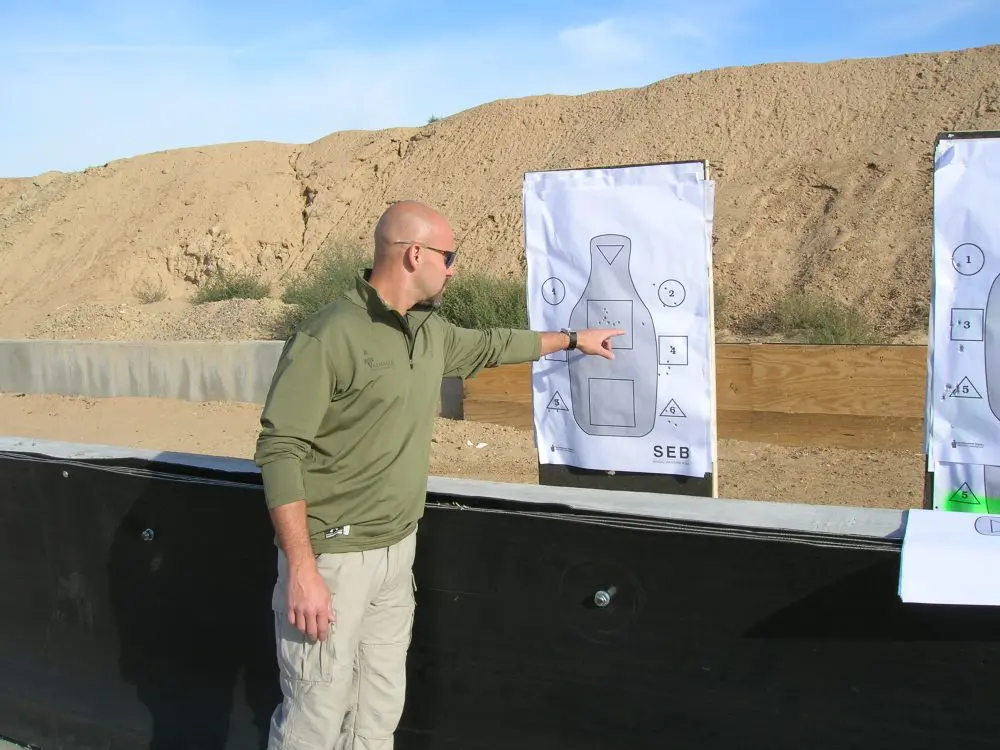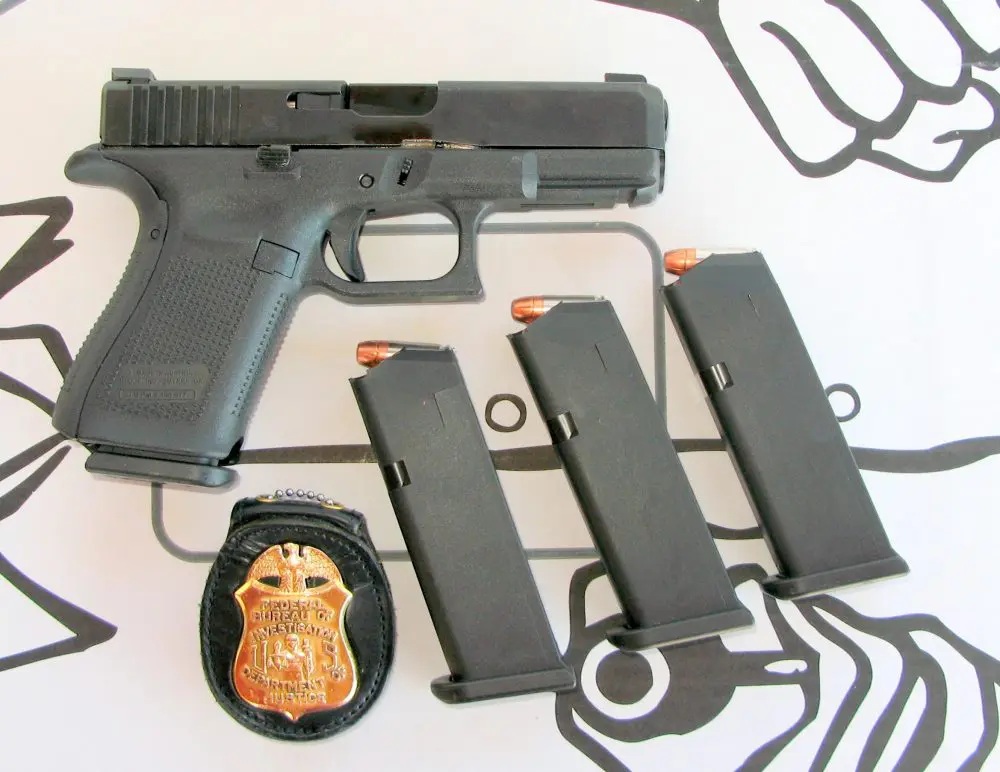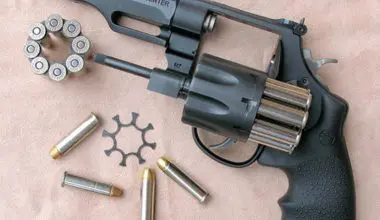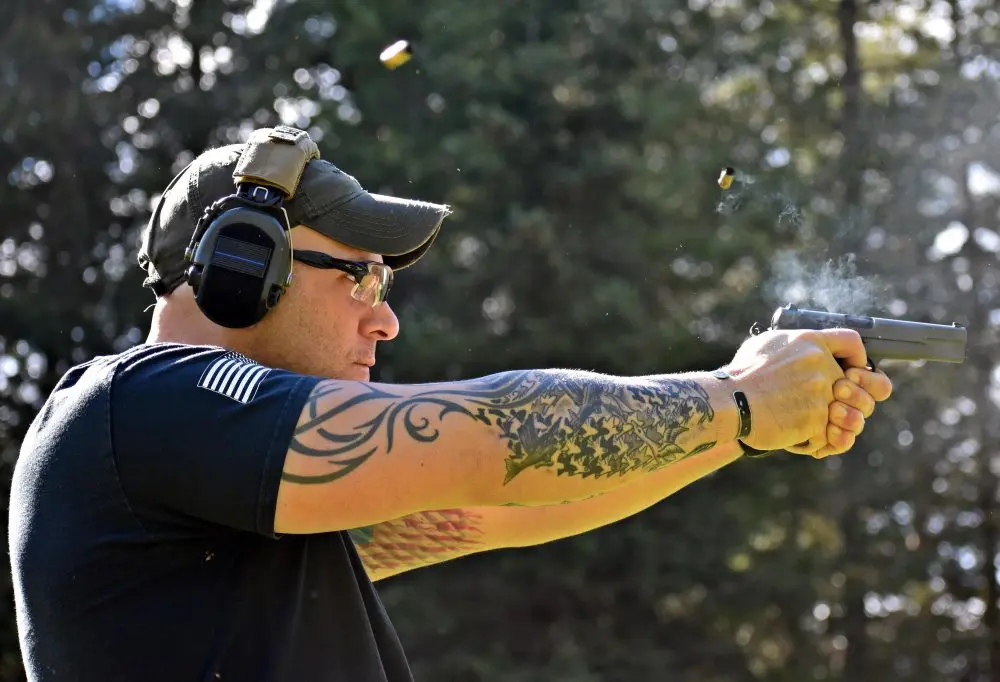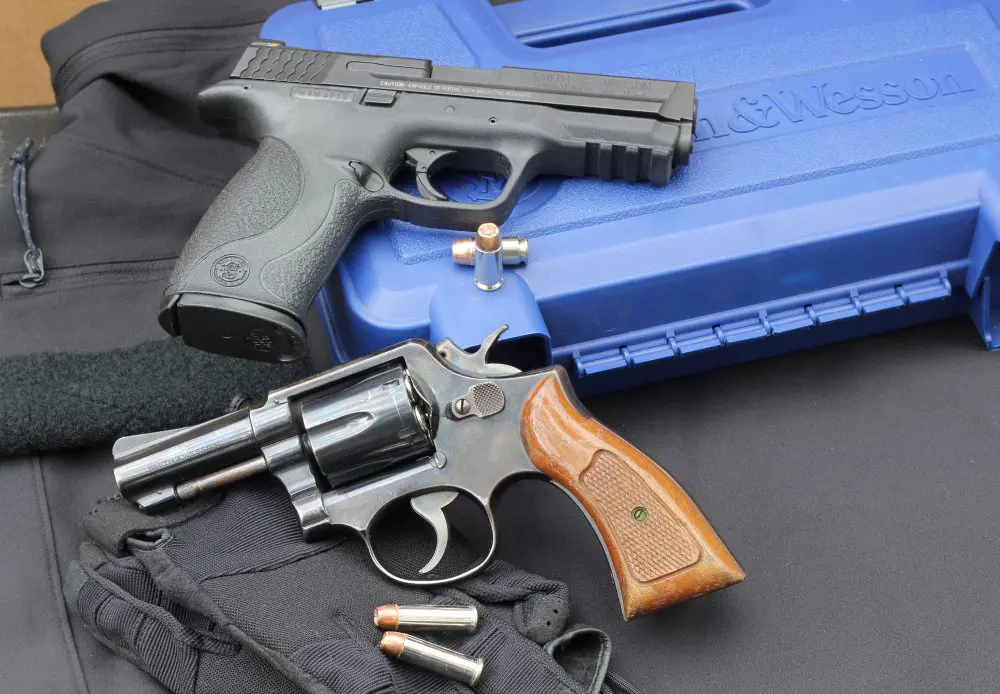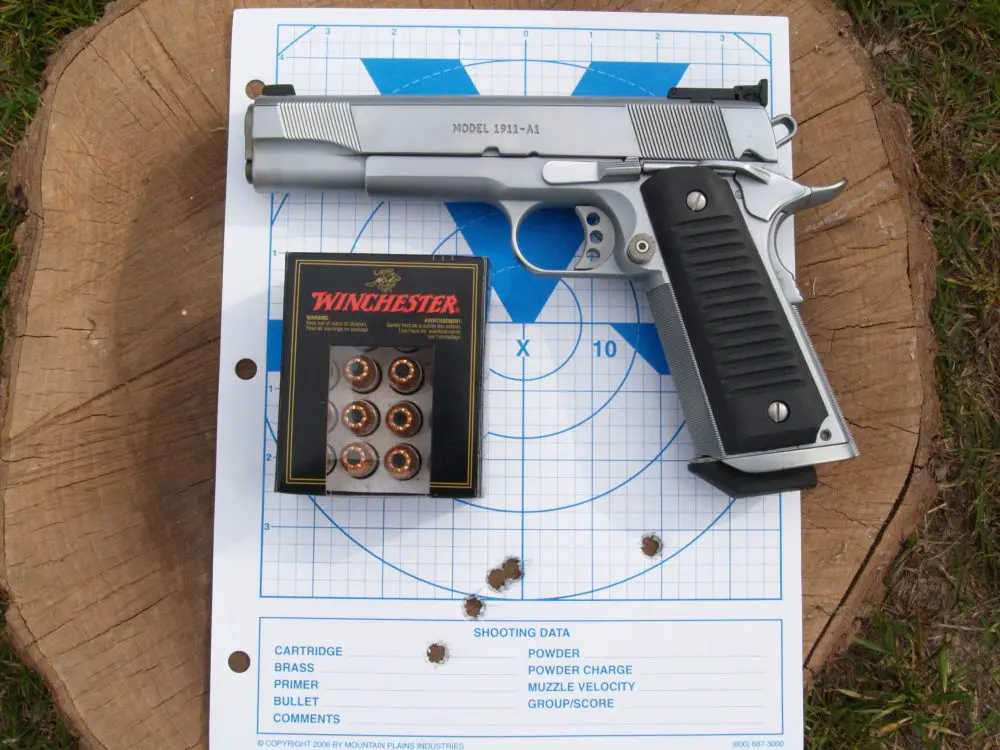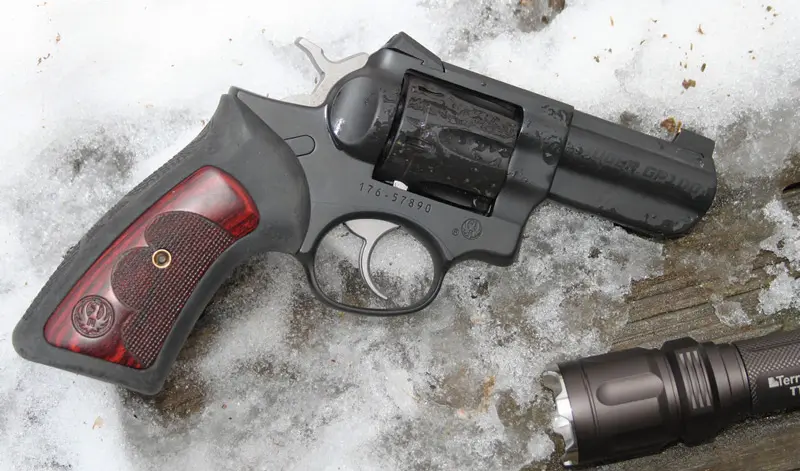
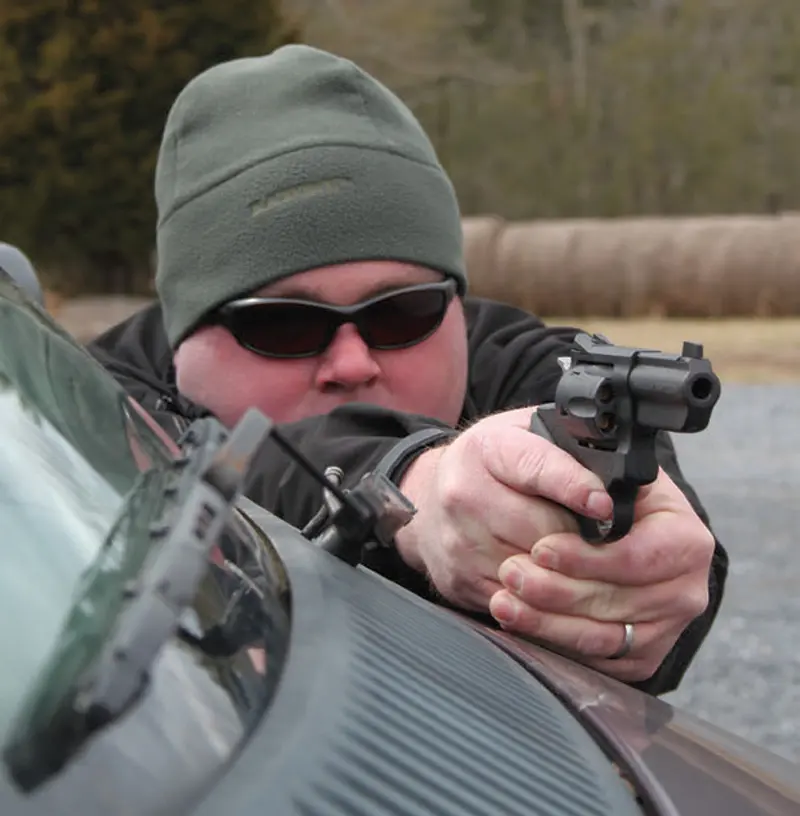
THE Wiley Clapp Ruger GP100 revolver? Before the reader turns the page with a condescending snort and a, “What more can be written about a .357 Magnum revolver?” let me explain.
This was actually my first meaningful experience with the GP100®, which was introduced 25 years ago to replace the Security Six in Ruger’s product line-up. I had purchased a GP100 years ago for my wife, who banished it to a nightstand and brought it out sparingly for range orientation sessions. I ended up replacing the Ruger GP100 with a Glock 17 with 33-round “happy stick” magazine installed.
So what was I doing at Stonewall Arms, my local firearms store, listening to owner Bill Randolph rave about a newly received Ruger GP100 revolver? I had merely stopped by for my weekly therapy session (read: hiding out from work) when Bill urged me to reacquaint myself with the Ruger GP100 in the form of the newly arrived Wiley Clapp (WC) Ruger GP100.
I had always given the revolver its due as a masterpiece of 19th century firearm design, but treated it like more of an anachronism not capable of competing in the 21st century. I like to think of myself as a forward-thinking individual when it comes to firearm trends. I take pride in having quickly perceived the advantages of polymer construction and the new double-action-only triggers heralded by Glock and then followed in one form or another by other manufacturers.
But there was something different about this Wiley Clapp GP100—maybe age is making me nostalgic. I immediately requested one from my Ruger contact.
Before we go any further, in the interest of full disclosure, I have to acknowledge that Mr. Clapp is an esteemed member of the gun writer fraternity. I met him several years ago at a BlackHawk Writer Seminar held at Gunsite. I doubt Mr. Clapp remembers the encounter.
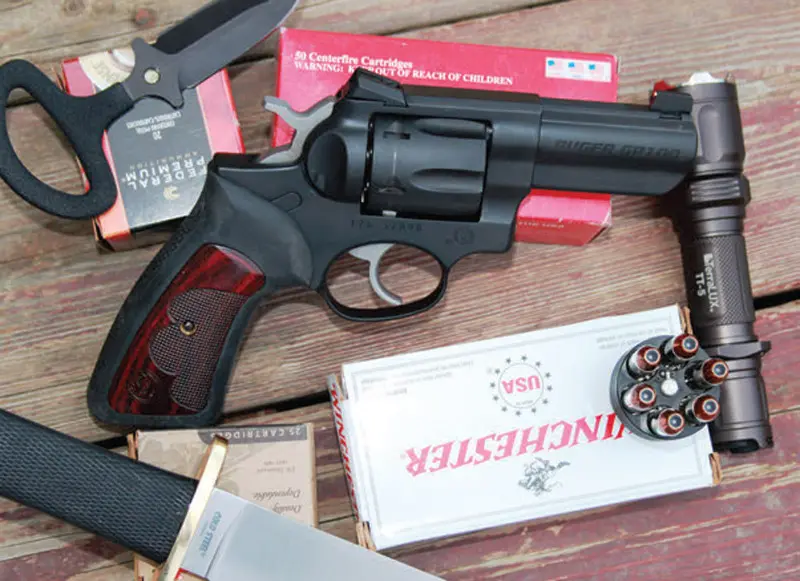
Table of Contents
ENHANCING, NOT EGO TRIPPING
Some time back, Wiley offered a take on a Colt Commander similar to what he is doing now with the Ruger GP100. It was heralded as a common-sense approach for enhancements, meaning the basic time-tested platforms such as the Colt Commander and now the Ruger GP100 are not needlessly altered for sake of ego. Items are tweaked to increase utility and performance.
Wiley’s enhancements were developed in conjunction with Bob Coyle of TALO Distributors and Sturm, Ruger & Co. From what I understand, there will be limited numbers of brushed stainless and Hawkeye matte blue WC GP100s available. The Ruger GP100’s operating mechanics and overall appearance have been left pretty much alone. Mr. Clapp’s goal was to improve the Ruger GP100 platform’s appeal as a general purpose personal defense weapon capable of harsh duty when combined with the dynamic .357 Magnum cartridge.
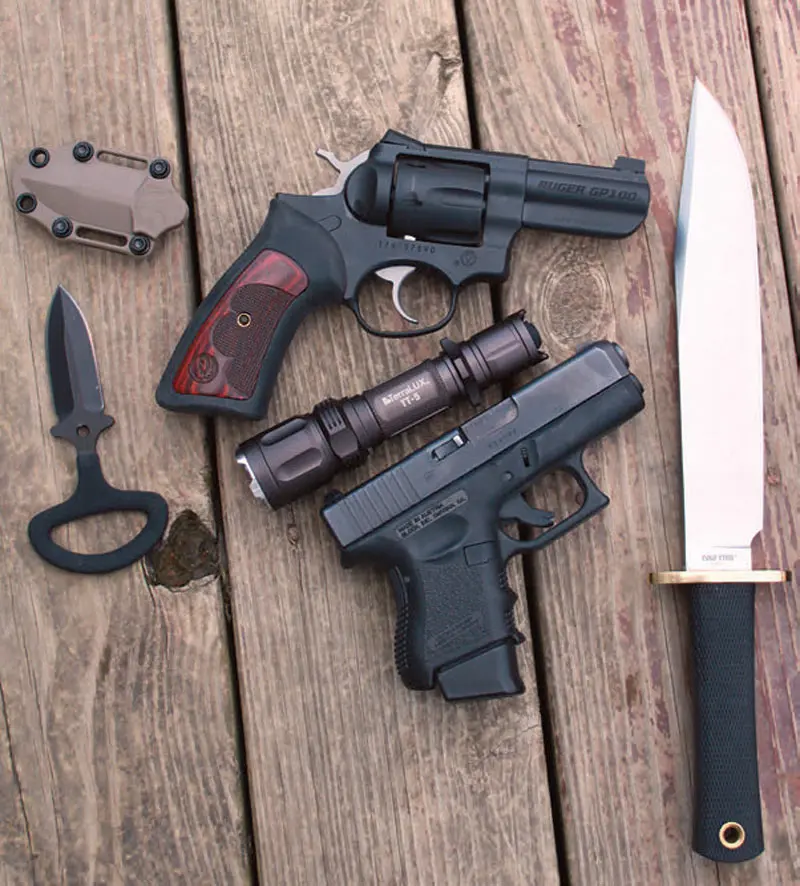
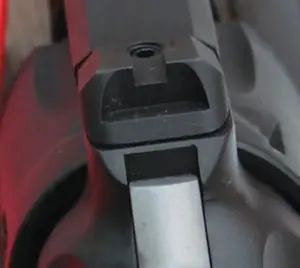
First, the WC Ruger GP100’s barrel length was limited to three inches. Second, thanks to the GP100’s beefy construction, there was room to modify the top strap for a dovetail notch. This enabled a Novak Lo-Mount rear sight combined with a Novak brass bead front sight.
The Ruger GP100 standard-issue Hogue rubber grip is replaced with one featuring wood inserts. The inserts have a triple-finger pattern. The back of the rubber grip has the Ruger logo molded into it, along with a discreet oval encircling the initials “WC.”
Most significantly in my opinion, the WC GP100 has been subtly “melted” via contouring and tapering around the barrel, trigger guard, and front circumference of the cylinder. This allows for better general handling and easier extraction and reinsertion into a holster. The Hawkeye blue matte finish frame is aesthetically pleasing and reduces the chance of glare off the GP100.
POSSIBLE ROLES
My personal defense carry weapons up to this point have been semiautomatic. However, I committed myself to carrying the GP100 Wiley Clapp for a period of time to gain a better understanding of its strengths and weaknesses. And with pending threat of legislation, a sixround .357 Magnum revolver may regain more consideration.
Some may find that, due to injury, strength, or training, working a semiautomatic’s slide is not practical. A previous shoulder/arm injury of my own reinforces the validity of this. My injury prevented efficient loading, unloading, reloading and malfunction drills with semiautomatic pistols.
While these manipulations are doable one-handed, I see no reason to do that when a revolver solves the problem. My daily carry and frequent range visits with this revolver during the evaluation period led to greater appreciation of what the .357 Magnum WC GP100 offers. I should have learned by now that any weapon design that has been around as long as the GP100 revolver has positive attributes that attract users to it.
Some individuals are more comfortable carrying a revolver, for reasons ranging from prior training and familiarity, to the inherent reliability of revolvers compared to semiautomatics (a debatable point, in my opinion), no external controls necessary to get a revolver into action, ability to better manage trigger control with a double-action revolver, or greater physical requirements of operating an automatic’s slide compared to a revolver’s operation.
MEASUREMENTS
Wiley Clapp’s tweaks may represent the final refinement of the Ruger GP100 revolver. The six-shot, three-inch barreled WC model weighs 37 ounces. The model I tested featured the Hawkeye matte blue finish. The WC GP100 offered a singleaction trigger pull of 4.5 pounds and double- action of eight pounds as measured on an RCBS trigger pull gauge. Overall height is 5.5 inches, length 8.5 inches and width at the cylinder 1.6 inches.
The WC GP100 will not be accused of being a subcompact weapon, nor should it be thought of as a snubby. The WC GP100 is a primary concealed-carry handgun—not a back-up weapon. Its simplicity and reliable firepower attracted me to it, along with the subtle improvements listed earlier in terms of sights and “melt” treatment. The WC GP100 was my constant companion for several months.
I turned to my go-to leather providers, DeSantis and Galco, to accommodate the WC GP100. The DeSantis Speed Scabbard and Galco Paddle holsters carry the GP100 high and tight to the body, aiding concealability. Both combine good retention while still allowing for quick presentation when needed.
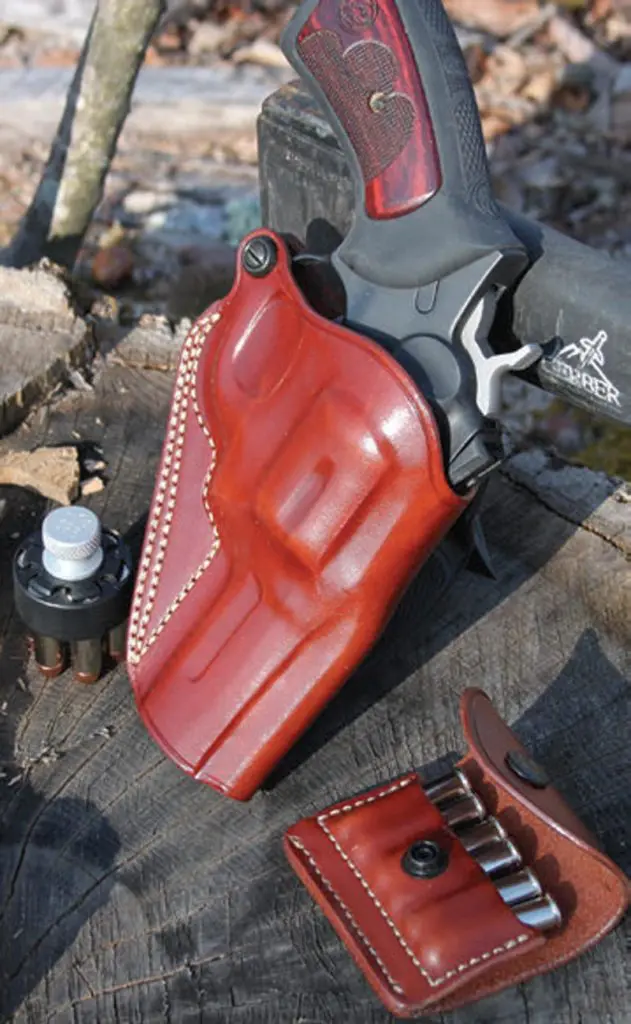
PERSONAL DEFENSE CONSIDERATIONS
Individuals who carry a handgun for personal defense must consider size, weight, capacity, and cartridge potency in choosing a weapon. The one trait that cannot be compromised is reliability. The WC Ruger GP100 magnifies all the revolver’s positive traits.
The .357 Magnum cartridge represents the near-perfect combination of controllability, power, and accuracy in a pistol cartridge. I challenge the reader to add up the foot pounds of energy stored in the WC GP100’s cylinder and compare it to the number of 9mm, .40 S&W, and .45 ACP rounds required to equal the muzzle energy resting in the six cylinder holes. This is not a scientific study, but I think it gets my point across.
The GP100 is about as rugged and reliable as you can get in a .357 Magnum double-action revolver. One does not have to limit or worry about the number of full-power loads fired in the Ruger GP100. A Ruger hallmark has always been overbuilding its firearms in terms of robustness. Ruger GP100 revolvers are tough, reliable, balance well, have a solid frame design, and are sized to perform as duty guns and also for concealed carry when properly holstered.
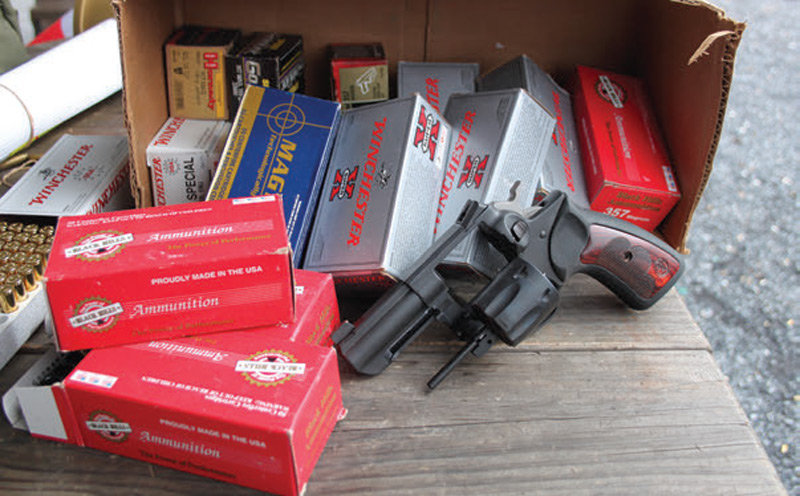
SINGLE OR DOUBLE-ACTION?
As alluded to earlier in the article, the single-action trigger measured a crisp 4.5 pounds with no creep. I believe that single-action fire should be the primary mode used with double-action revolvers for accuracy’s sake. Many may take me to task for this. Single action does not give up much to the double-action mode time wise, especially if accuracy is factored in.
With practice, the user can become quite proficient at manually cocking the hammer during recoil, minimizing the speed difference associated with double-action firing versus single action. The double-action trigger pull is something not easily mastered at ranges past ten yards in terms of accuracy. A mantra for all firearm instructors is the importance of trigger control for accurate shooting. The double-action trigger should be saved for CQB encounters and ranges measured in feet. In my opinion single-action should be for aimed fire at anything beyond room distance.
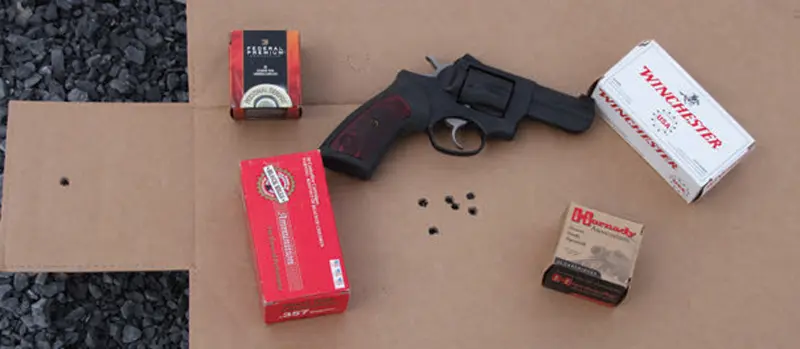
AMMUNITION
Range testing utilized Black Hills, Hornady, Federal and Winchester ammunition. Both .38 Special and .357 Magnum loads were used, with bullet weights spanning 125-, 140-, and 158-grain loads. A huge benefit of anyone choosing to carry the WC GP100 .357 Magnum is the ability to practice with .38 Special loads, which are more economical and not as harsh in terms of recoil and blast, factors that should not be underestimated.
I practice with .38 Special rounds when I want to work on shooting fundamentals without wrestling with the .357’s full-power recoil and muzzle blast. Practice with .38 Special aids in building confidence and exposes recoil-induced bad habits. My adolescent sons had no problems controlling the 37-ounce WC GP100 when firing .38 Special loads. The WC GP100’s balance and grip design deserve much of the credit for this. Full-power .357 Mag loads proved problematic and uncomfortable for them.
The three-inch barreled WC GP100 does cause quite a stir when shooting .357 Magnum loads, with the 125-grain varieties seemingly producing more muzzle blast than the heavier bullet loads. Semiautomatic designers have constantly tried to duplicate the .357 Magnum’s ballistic performance and capture it in a semiautomatic platform.
RANGE TIME
Range evaluation consisted of a test regimen made up of engaging multiple steel and paper targets, firing while moving, reloading from cover, and engaging targets from behind barricades. Speedloaders proved a definite advantage in reloading during these scenarios. I did not bench the WC GP100, as I feel this is worthless information for a three-inch barreled revolver. The WC GP100 with its Novak rear sight and brass bead front sight proved more than capable of running plate-rack steel targets 25 yards away.
That is more than enough accuracy for a personal defense handgun. In fact, when having the time to deliberately aim and fire, steel man targets over 100 yards away were not safe.
The notch of the Novak rear sight allows for a bit of daylight on either side of the front sight, with its embedded brass bead permitting accurate shooting while maintaining quick and easy target acquisition at close distances. Kudos go to Mr. Clapp for specifying the Novak rear and brass bead front sights.
The 125-grain .357 Mag loads generated over 1,300 feet-per-second (fps) velocity. Interestingly, the three-inch barrel seemed to limit the muzzle flash so prominent in snub-nose revolvers with two-inch barrels. A barrel longer than three inches would have only diminishing returns by increasing weight and complicating concealability without contributing that much more to the potency of the WC GP100.
Another side note of my range experience is that, after thousands of rounds fired through semiautomatic handguns, I quickly relearned that revolvers require a slightly different firing grip. Thumbs ahead do not work well next to a revolver’s cylinder. Thumbs need to be curled inward toward the frame. This lesson was learned early in nearly 500 rounds fired during numerous range visits.
Accuracy from the WC GP100 exceeded expectations, keeping five rounds under four inches at 25 yards, firing offhand with the majority of loads tested. It was obvious the WC GP100 could outperform my shooting abilities. The grips and frame size helped to tame the .357 Magnum recoil and allow fast target reacquisition. Anecdotally, clay pigeons were routinely shattered at 35 yards firing offhand.
MY RECS
The Wiley Clapp Ruger GP100 .357 Magnum revolver is a viable personal defense handgun. As with most things related to firearms, handgun selection is a personal decision often based more on intuition than fact-based reasoning. Most will not abandon their classic 1911s, while others will not forego high-capacity polymer frames. But six rounds of .357 Magnum in a reasonably sized and reliable package will bring some handgunners back to the revolver fold.
I have no doubt that anyone choosing the WC Ruger GP100 will be well equipped to handle a personal defense situation. In such encounters, an individual will be required to react to an attack under the most unfavorable conditions. More than likely, the weapon will have to be produced after an aggressor has launched the attack.
That weapon needs to be ultra reliable, no matter if fired upside down, pressed against someone, or used with the weak hand, and chambered in a round that will have an effect sooner rather than later.
I am not abandoning my Glocks or 1911s. But the Wiley Clapp Ruger GP100 does demand consideration.
